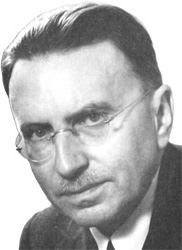Part 4: Hochliteratur (high literature) and Kleinliteratur (low literature)
Translations
To understand Karl Ludwig Schmidt’s argument concerning the genre of the canonical gospels, we need first to understand his usage of the terms Hochliteratur and Kleinliteratur. These terms are difficult to translate into English, because we lose the nuance of the German words, while picking up unwanted baggage from their English equivalents.
Literally, they mean “high literature” and “low literature,” and that’s exactly how they’re rendered in The Place of the Gospels in the General History of Literature. However, in some translations of form critics’ works, you’ll see them left untranslated. Sometimes you’ll see Kleinliteratur translated as “folk literature” or “popular literature.” The translator of our text, Byron R. McCane, chose to translate the terms literally, since for him to leave terms untranslated is an admission of defeat. I’m not sure I agree with that position, but at least he has his reasons. There’s no right or wrong approach, I suppose.
No new thing under the sun
McCane is certainly wrong, however, about the origins of the terms. He writes:
Many scholars who discuss Die Stellung [i.e., The Place (of the Gospels)] choose not to translate these German terms. They are, after all, neologisms created by Schmidt to designate specialized literary categories. (p. xxxii, emphasis added)

The terms are not neologisms; they predate Schmidt. As far back as 1919, Martin Dibelius used Kleinliteratur in From Tradition to Gospel. In the first edition (Tübingen, 1919) he wrote:
In erhöhtem Maße wird dies alles von der sogenannten Kleinliteratur gelten. (p. 1, emphasis added)
In the English translation this sentence reads:
What we have said is true also in humbler forms of literature. (p. 1, emphasis added)
You can find the terms in discussions of literary works dating as far back as the late 19th century. A quick survey of Google Books reveals that Hochliteratur and Volksliteratur were in use at least as far back as 1891. Conceptually, then, the terms and the concepts behind them had been current in German academia (viz., history of literature, literary criticism, etc.) for a couple of decades before Schmidt’s The Place of the Gospels was published.
McCane is hardly alone. I can only guess that most people who have read (or claim to have read) Dibelius are familiar only with the second edition of From Tradition to Gospel (1933), and are unaware of the first edition (1919). It’s also a bit hard to trace the usage of these terms, because when translators convert them into English, you never know what you’ll get — Low literature? Folk literature? Folk tales? Popular literature? Humbler forms of literature?
Ideal Types
Before we continue, let’s review the concept of ideal types. If we were to envision the ideal parliamentary democracy, we would list the defining characteristics — some integral, others peripheral — generally held in common. We would not expect any particular, real-world parliamentary democracy to have every one of these characteristics. That does not mean they are something else. Nor does it mean that our ideal type is invalid. On the other hand, if a nation-state coincidentally shares a few peripheral characteristics or partially shares one of the core characteristics, that doesn’t mean it has magically become a parliamentary democracy.
Likewise, if we created a list of all the defining characteristics of Hochliteratur or Kleinliteratur and compared that list against extant works of literature from the ancient Greco-Roman world they won’t all correspond perfectly against the ideal types. That’s because, as we all should know, the ideal type is a fiction: a tool that we use to help us better comprehend the issues at hand. It’s a subjective model of the problem domain, not an objective definition of reality. Continue reading “The Genre of the Gospels: How the Consensus Changed (Part 4)”
